Behind the Scenes: Scenic and Costume Design of THE GOSPEL AT COLONUS
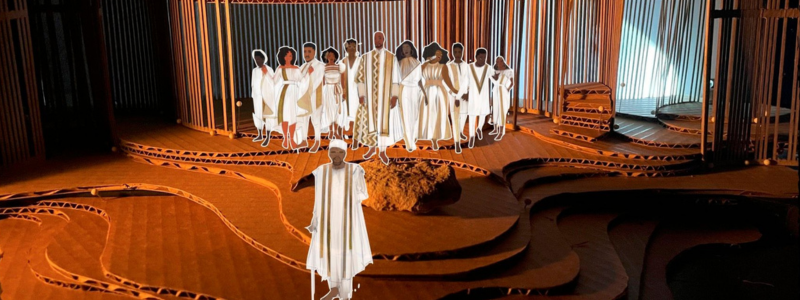
The Gospel at Colonus is a lush theatrical experience. The cast, band, and creative team depict Oedipus’s fateful curse and redemption through intricate vocal arrangements, a powerful score, and compelling storytelling. For the 90 minutes of the production’s duration, audiences are awash in sound and story, complemented and accentuated by John Culbert and Raquel Adorno‘s skillful designs.
Here, Scenic Designer Culbert and Costume Designer Adorno take us behind-the-scenes of their designs, sharing their inspiration and outlining how the set and costumes contribute to Sophocles’s timeless text. Read on to learn more!
Scenic Design
John: There was actually a world developed for this production before the pandemic, and a set that was designed by Arnel Sanciano, but that version of our own world – and that version of the story that was going to be told in 2018 when we first started this journey – has evolved since then. The original world for this show was based a church, and that’s the same approach that the original production of The Gospel at Colonus took: the idea that we’re in a church.
To me, that creates a world for the form of the story that they were telling, and the vocabulary of how it was going to be told. In the meantime, for this production – for the 2023 Court production – the story evolved to focus more on the original story of the play, Oedipus at Colonus; the story of Oedipus and the journey he takes to be transformed, to be accepted, and for him to accept himself and thus be able to pass to the next world peacefully.
So, focusing on the actual human journey of Oedipus leads you to create a different kind of world. The focus changes to capturing the human journey through this particular vocabulary of gospel music, and the power that that music has to reveal that human journey is what makes this all so magical.

The process started with looking at all kinds of spiritual spaces, not just churches. To me, walking in Court Theatre feels like a spiritual place, particularly when it’s empty. You walk in, and it’s like, “Wow. Think of all the things that can happen in here!” To me, that is a spiritual place as well. So there’s imagery of places of the spirit. In the context of the play, the actual, literal setting is a spiritual grove that’s the home of the Furies. In the story of Oedipus at Colonus, there are places in that grove that are forbidden, Oedipus goes there, and, as a result of that, he has to go through a ritual in order to appease the Furies.
Here, we see some imagery that was used for the notion of the grove. As my research progressed, I found images that combined those two things: they captured elements of a grove, but also the essence of those more architectural, spiritual places. Here, we see the wood-slatted wall in the back, and that wall is actually curved; it has elements of the grove, but also architectural elements of a church.
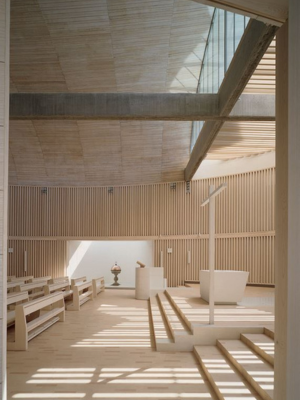
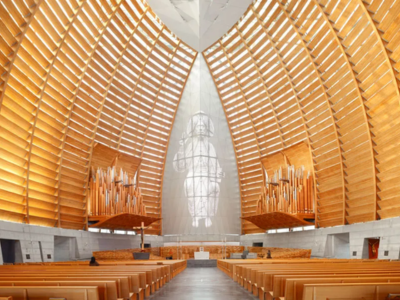
In the model, you see the slatted wall – that came directly from the inspiration image – but it’s also an organic space. The floor has a number of levels that are very organic in shape, and – right in the center – there’s a rock that’s more natural than the rest of the world onstage. That rock is the most sacred spot in the world; that is a place where you should not go. You shouldn’t sit on it without being invited by the Furies.
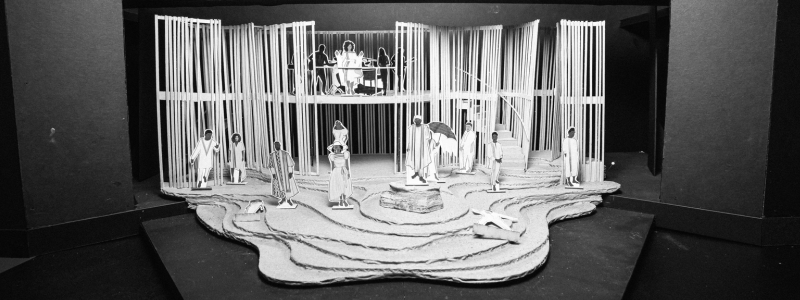
This world is one of islands within the theatre. We have that rock and we have the set. At the beginning of the show, Oedipus enters this space after being on a long journey. He meets the people of that world, the people of Colonus, who are on this island, which sets up the dynamic of who’s on that island and who isn’t – literally and figuratively – in that moment. But the theatre itself is also part of our spiritual place. As you can see in the set, the edges are visible all the way around. It’s not an endless world – it’s an island. And so the theatre around that island becomes part of the world, as well. To honor that, we’re using the house as part of the world of the play, which is always exciting.
One of the things that’s really amazing is just how many people are in that world – it’s really powerful. And then, of course, when you sing in that space, that’s going to be hugely powerful, as well. It’s really exciting!
Costume Design
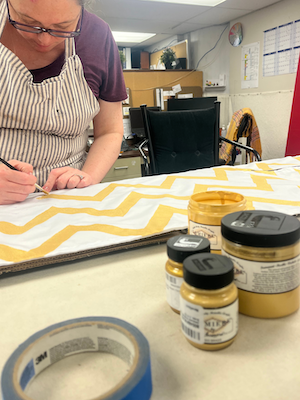
Raquel: The costumes for The Gospel at Colonus are rooted in the visual language of Ancient Greece, African royalty, and contemporary fashion. Nearly all of the garments are natural fibers painted with metallic gold paint, some of which were hand-painted by Court’s wardrobe team.
The palette is meant to evoke the colors of the grove that John Culbert designed: wood, stone, and sunlight. The actors, themselves, were also a huge source of inspiration. I spent many hours studying pictures of them trying to create looks that evoked the world of the play, their characters, and their individual style.
I also drew inspiration from the Black Pentecostal church; for example, the use of scarves is rooted in that tradition. During my senior year of college, I was going through a difficult time and my mentor noticed. As a means of support, she took me to church with her family – they were congregants of a Black Pentecostal church in central Illinois. There, the walls vibrated with energy, and music, and love, and the parishioners looked radiant as they worshipped. It’s my hope that these costumes capture that same sense of ecstatic joy that I experienced with my mentor; I hope to respectfully honor that in this design.
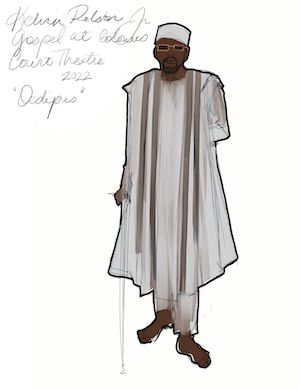
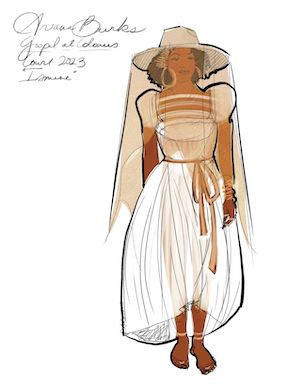
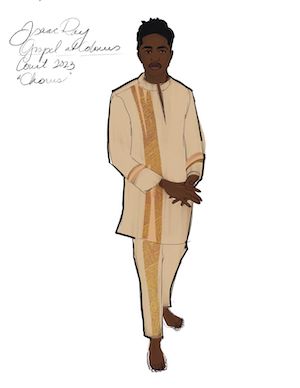
The Gospel at Colonus is onstage from May 12 – June 18 and tickets are available now! Join us and experience this one-of-a-kind theatrical event for yourself!